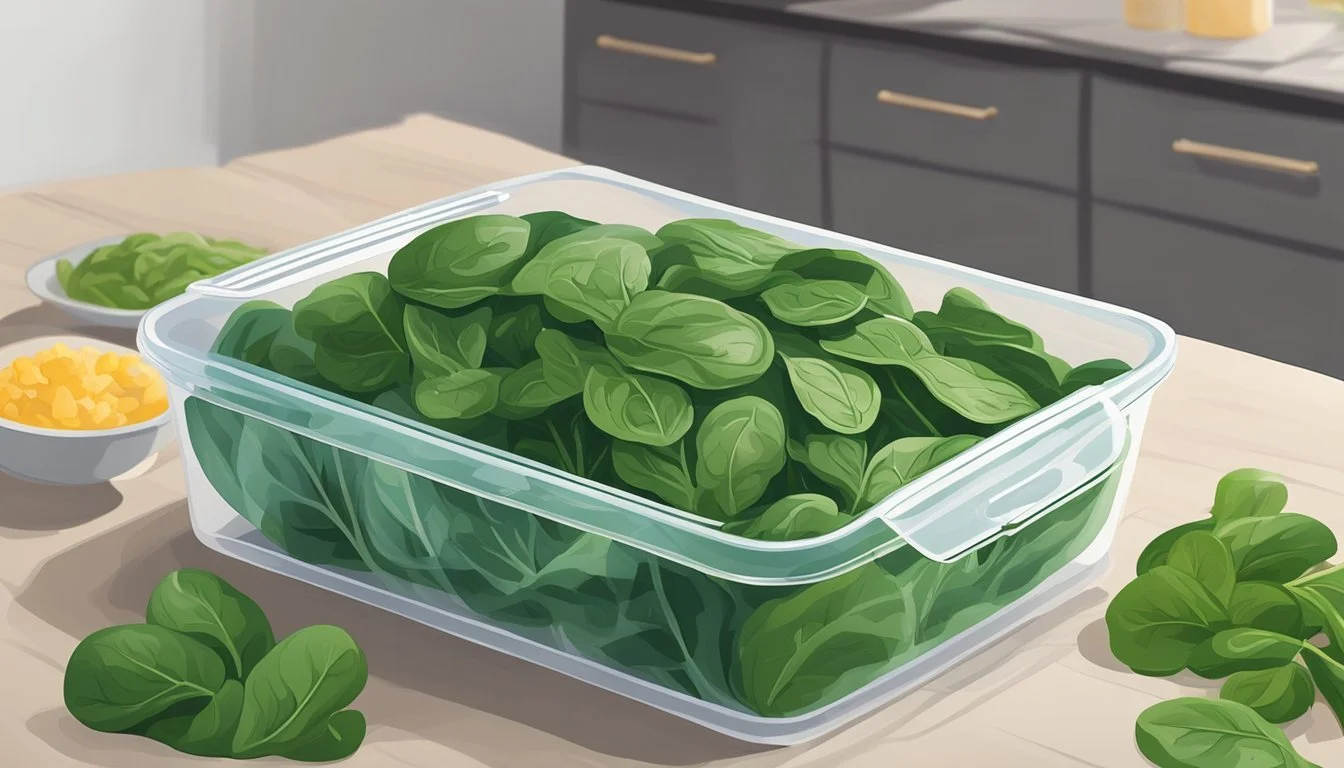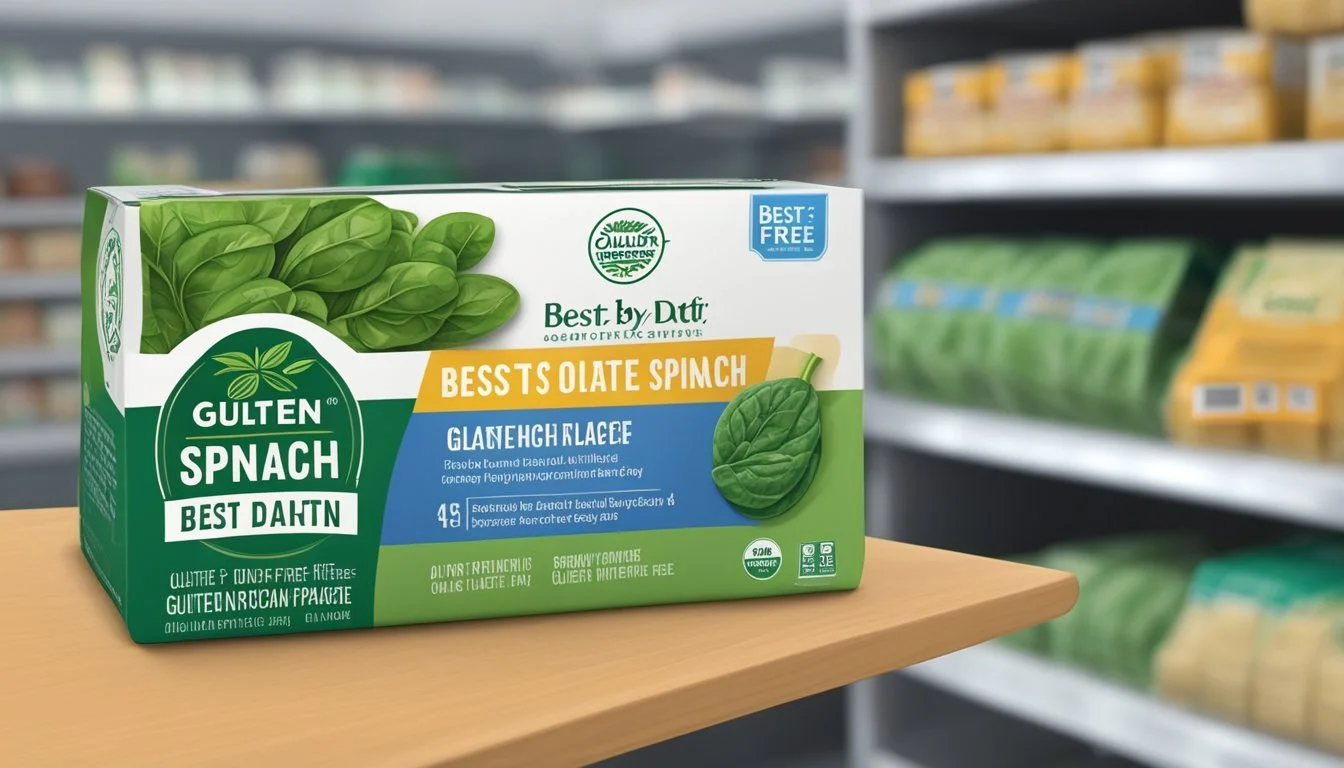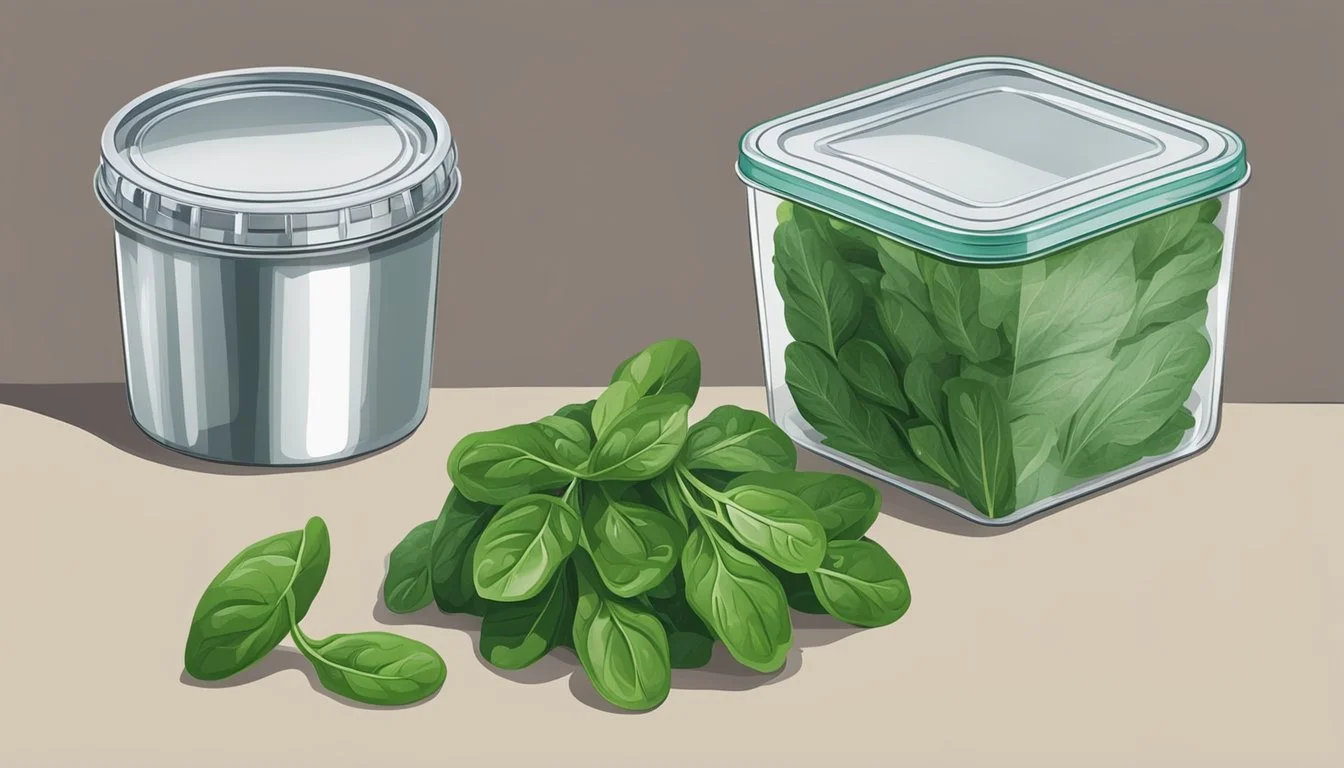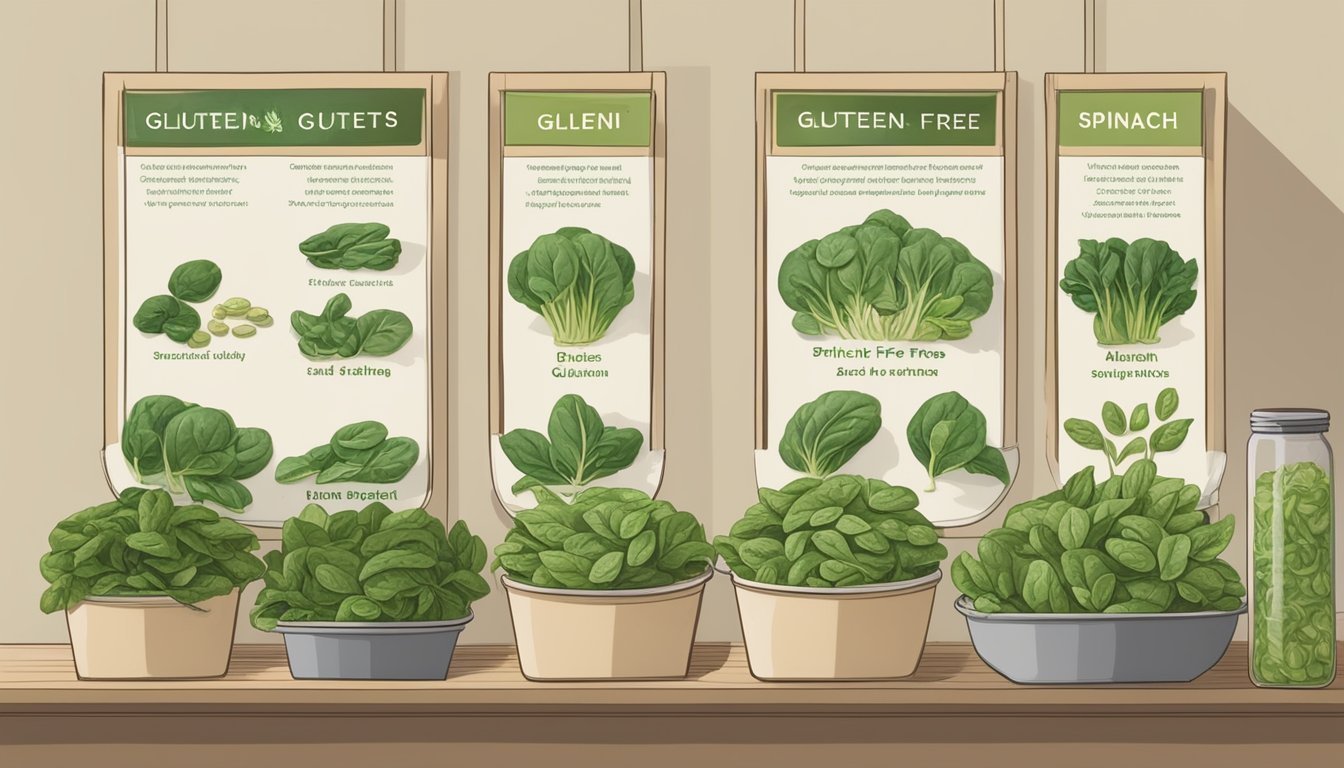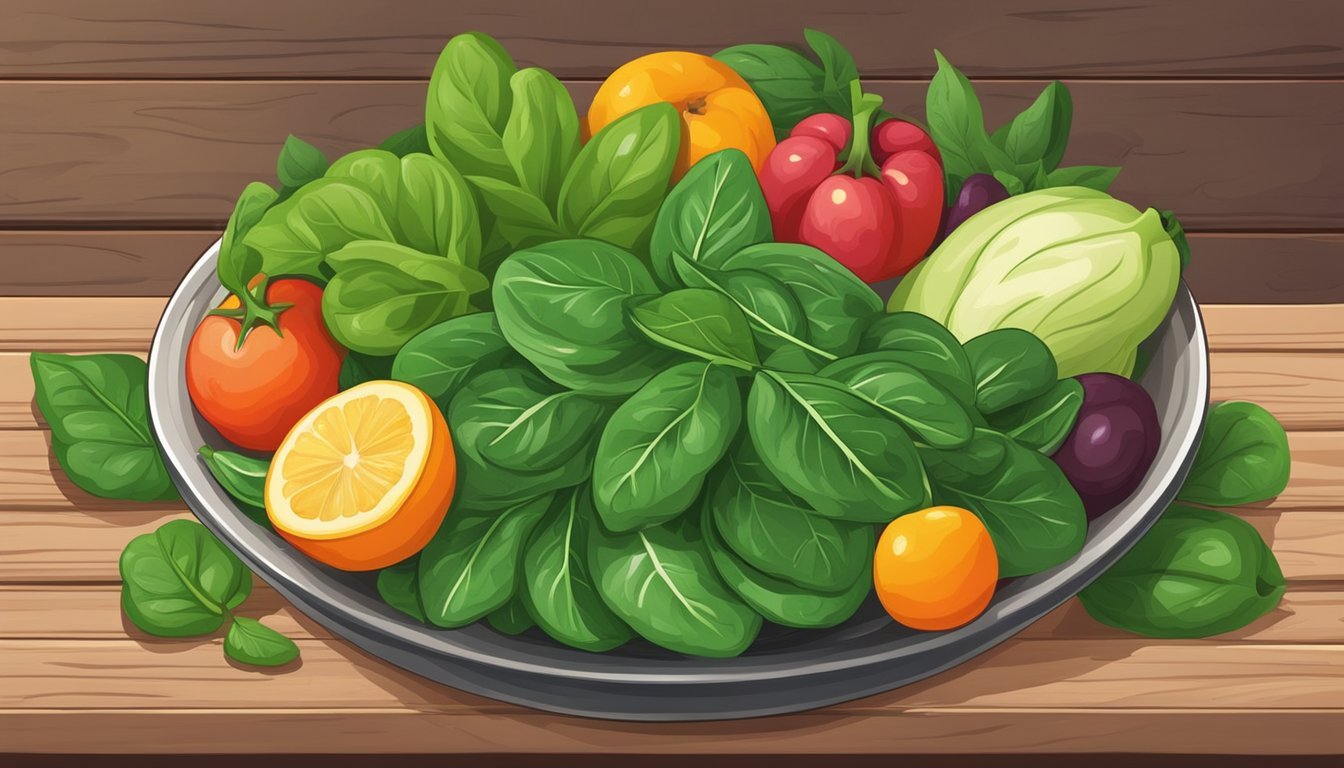How Long Does Gluten-Free Spinach Last?
Shelf Life and Storage Tips
Eating gluten-free spinach can be both nutritious and delicious, but how long does it last? The lifespan of fresh spinach varies based on how it's stored. Fresh spinach typically lasts about 5 to 7 days when stored in the refrigerator, but cooked spinach only lasts for 3 to 5 days. Freezing cooked spinach can extend its lifespan to 10 to 12 months.
Ethylene produced by fruits can cause spinach to spoil faster, so it’s essential to store spinach separately from ethylene-producing fruits. Keeping spinach dry and in a well-sealed container can also help maintain its freshness. For those following a gluten-free diet, managing the storage and lifespan of spinach is key to enjoying this leafy green without waste.
Understanding Gluten-Free Spinach
Gluten-free spinach is not only safe for individuals with gluten sensitivities, but it is also a nutritious and versatile ingredient. Recognizing the quality of fresh spinach and understanding its health benefits ensures its optimal use in a gluten-free diet.
Identifying Quality Fresh Spinach
Quality fresh spinach should have vibrant green leaves, free from yellowing or wilting. Any signs of slime, dark spots, or a foul odor indicate spoilage. When choosing spinach, opt for crisp, firm leaves with a slightly glossy finish.
Leaves should be free from excessive moisture. Wet leaves can promote quicker spoilage. It is also beneficial to store fresh spinach properly to extend its shelf life. Keeping it in a dry, sealed bag in the refrigerator can help maintain its freshness for up to a week.
Benefits of Gluten-Free Spinach
Spinach is naturally gluten-free and packed with essential nutrients. It provides a range of vitamins, including vitamins A, C, and K. These vitamins support immune function, skin health, and blood clotting respectively. Spinach is also rich in folate, crucial for cellular function and tissue growth.
Minerals such as iron and magnesium found in spinach contribute to energy production and bone health. Additionally, spinach's antioxidant properties help combat inflammation and oxidative stress. Including spinach in a gluten-free diet supports a balanced and nutritious meal plan while offering versatility in preparation methods.
Storing Spinach for Optimal Shelf Life
Proper storage is essential to maintain the freshness and extend the shelf life of gluten-free spinach. Whether it's refrigerating, freezing, or using airtight containers, these techniques will ensure your spinach stays fresh longer.
Refrigeration Techniques
To refrigerate spinach effectively, start by removing any damaged or wilted leaves. Thoroughly dry the spinach using a salad spinner to eliminate excess moisture, which can cause decay.
Wrap the spinach in a clean paper towel, which helps absorb any remaining moisture. Place the wrapped spinach in an airtight container or resealable plastic bag. Store it in the crisper drawer of the fridge, where it typically lasts between 5 to 7 days. Regularly check for signs of spoilage to ensure it stays fresh.
Freezing Spinach
Freezing spinach can greatly extend its shelf life. Begin by blanching fresh spinach—immerse the leaves in boiling water for about 2 minutes, then quickly transfer them to an ice bath to stop the cooking process.
After drying, portion the spinach into airtight containers or freezer bags. For convenient use, puree the spinach with some water and freeze it in ice cube trays. Once frozen, transfer the cubes into freezer bags. Properly stored frozen spinach can last up to 12 months in the freezer.
Room Temperature Storage
Spinach is highly perishable and should not be stored at room temperature for extended periods. Room temperature storage can quickly lead to wilting and spoilage due to the spinach's high water content.
If room temperature storage is necessary, limit it to a few hours and keep the spinach in a cool, dry place. For best freshness and longevity, refrigerate or freeze it as soon as possible.
Using Airtight Containers
Using airtight containers is crucial for maintaining the freshness of spinach. Airtight containers prevent exposure to air and moisture, which can accelerate spoilage.
After cleaning and drying the spinach, store it in a tightly sealed container or resealable bag. This method helps maintain a consistent environment, reducing the risk of mold and wilt. Additionally, using clear containers allows for easy monitoring of the spinach's condition without constant opening.
With these storage tips, you can enjoy fresh spinach for a more extended period, minimizing waste and maintaining quality.
Preparation and Usage Ideas
Using gluten-free spinach in a variety of dishes not only enhances nutrition but also adds vibrant color and flavor. These subsections provide detailed ways to incorporate spinach into your recipes and develop gluten-free spinach dishes.
Incorporating Spinach into Recipes
There are multiple ways to incorporate spinach into everyday meals. Finely chop it to add to soups and stews which not only provides nutrients but also creates a more colorful and textured dish. Spinach can be used in smoothies for added protein and a fresh taste; just blend it with fruits like bananas and apples.
For those who enjoy pasta, gluten-free spinach pasta is an excellent choice. Mix cooked spinach with garlic and cream to create a creamy sauce that pairs well with gluten-free pasta. Spinach can also be a vital ingredient in making gluten-free pizzas, where it can be used as a topping with other vegetables and protein sources.
Creating Gluten-Free Spinach Dishes
Creating gluten-free spinach dishes is straightforward and rewarding. Start with spinach muffins combining spinach, gluten-free flour, and simple ingredients such as applesauce and vanilla to create a nutritious snack or breakfast. Another popular dish is gluten-free spinach dip which blends spinach with dairy-free alternatives to create a creamy, delicious dip.
In salads, spinach can be combined with ingredients like quinoa, avocado, and a light vinaigrette to prepare a refreshing and satisfying meal. For a delicious main course, consider spinach-stuffed chicken breasts. Fill the chicken with a mixture of spinach, garlic, and gluten-free breadcrumbs for a protein-rich and flavorful option.
These methods and recipes ensure that gluten-free spinach not only lasts longer but also caters to various dietary needs while adding taste and health benefits to your meals.
Safety and Quality Control
Ensuring spinach remains safe and high-quality involves careful detection of spoilage and proper handling and washing techniques. Critical attention to these factors helps maintain the vegetable's freshness and nutritional value.
Detecting Spoilage
Bad spinach typically exhibits specific signs indicating it should not be consumed. Look for slimy textures on the leaves, which are a clear indication of spoilage. Discoloration, such as yellowing or browning, is another sign that the spinach is past its prime.
Check the stems as well; fresh spinach should have firm stems. Wilting and an unpleasant odor are additional indicators of spoilage. Always inspect the package's label for any expiration dates or storage instructions.
Key Indicators of Spoilage:
Slimy texture
Discoloration (yellow or brown)
Wilting
Unpleasant odor
Expired label date
Handling and Washing Spinach
Proper handling and washing are essential for maintaining spinach safety. Always wash spinach thoroughly under cold running water before consumption. An effective method is to rinse the spinach in a clean bowl, changing the water several times to remove any dirt or pesticides.
For added safety, use a vegetable brush to gently scrub the leaves. After washing, dry the spinach using a clean paper towel or a salad spinner to remove excess moisture. This step helps prevent the growth of bacteria.
Tips for Washing Spinach:
Rinse under cold running water
Use a clean bowl for multiple rinses
Consider using a vegetable brush
Dry with a paper towel or salad spinner
Proper handling, including washing and drying spinach, ensures it remains safe and fresh for consumption.
Spinach Preservation Methods
Preserving spinach ensures you have a supply of this nutritious green when it's out of season. Two effective ways to preserve spinach are drying (dehydration) and canning. Each method has its own process and benefits.
Drying and Dehydration
Drying spinach involves removing moisture to prolong its shelf life. Use a salad spinner to remove excess water after rinsing the leaves. Then, dry the spinach further with a paper towel.
Set a dehydrator to 125°F (52°C) and place the spinach in a single layer on the trays. Dry for 6-8 hours until the leaves are brittle. Store the dried spinach in airtight containers.
This method is ideal for making spinach powder, which can be added to soups and smoothies.
Canning Spinach
Canning spinach requires pressure canning due to its low acidity. Start by blanching fresh spinach in boiling water for 2 minutes, then transferring it to an ice bath to halt the cooking.
Pack spinach into sterilized jars, leaving one inch of headspace. Add boiling water, covering the leaves while maintaining headspace. Secure lids and process in a pressure canner at 10 pounds of pressure. Process pints for 70 minutes and quarts for 90 minutes, adjusting for altitude.
Canned spinach can last for up to one year, retaining much of its nutritional content.
Spinach in Culinary Delights
Gluten-free spinach recipes are versatile and flavorful. Two standout dishes that highlight spinach are spinach artichoke dip and spinach as an ingredient in main courses and sides.
Gluten-Free Spinach Artichoke Dip
Spinach artichoke dip is a classic party appetizer. This gluten-free version combines spinach and artichokes with cream cheese, sour cream, and mayo to create a rich, creamy base.
Parmesan and mozzarella cheese add depth and gooey texture. Season with garlic powder, onion, and other spices for added flavor.
Serve it warm with gluten-free crackers or fresh veggies. Leftovers store well in the fridge and can be reheated for a quick snack. This dip is not only tasty, but it also offers a nutritious boost with spinach and artichokes.
Spinach for Main Courses and Sides
In main courses and sides, spinach enhances various dishes. For main courses, it pairs well with proteins like chicken, fish, and tofu. Spinach can be incorporated into dishes like gluten-free spinach lasagna, where layers of spinach mix with ricotta and tomato sauce.
In side dishes, spinach can be sautéed with garlic and onion for a simple, nutrient-rich accompaniment. It's also great in spinach salads mixed with veggies, nuts, and gluten-free dressing.
Whether used fresh or incorporated into cooked dishes, spinach adds vibrant color and essential vitamins to meals.
Spinach Varieties and Selection at the Store
Choosing the best spinach and understanding the different varieties available can ensure you get the freshest and most suitable type for your needs. Below, we'll cover how to pick spinach at the grocery store and look into some exotic varieties you can find online.
Choosing the Right Spinach at the Grocery Store
When shopping for spinach at the grocery store, it's important to look for fresh, vibrant leaves. Fresh spinach should be dark green and free from wilt, yellowing, or spots. Typically, you will find three common types:
Common Spinach Varieties
Savoy Spinach: Dark green with crinkled leaves, great for cooking. Flat-Leaf Spinach: Smooth leaves, ideal for salads. Semi-Savoy: A hybrid with slightly crinkled leaves, versatile.
Always check the packaging date to ensure the spinach is as fresh as possible. Bagged spinach often lasts about 3-5 days in the refrigerator if stored properly.
Exploring Exotic Varieties Online
For those who enjoy trying different types of spinach, online stores like Amazon offer a broader selection compared to local grocery stores.
Popular Varieties Available Online
Bloomsdale Long-standing: Known for its texture and taste, excellent for cooked dishes. Regiment Spinach: Spear-shaped leaves, perfect for juices and smoothies, matures quickly. New Zealand Spinach: Technically not true spinach but similar in taste and used in salads and cooking.
Purchasing these varieties online allows for a more diverse diet. When ordering, consider the seller’s ratings and ensure the product is fresh upon arrival.
Whether it's for traditional recipes or unique, new dishes, buying exotic spinach varieties online can add an interesting twist to your meals. Ensure proper storage by keeping them in an airtight container in the refrigerator to maintain freshness.
Gluten-Free Living Tips
Incorporating gluten-free foods into your diet ensures better health outcomes, especially for those with celiac disease or gluten sensitivity. Proper handling and preparation also minimize the risk of cross-contamination.
Spinach as Part of a Gluten-Free Diet
Spinach is naturally gluten-free, making it an excellent vegetable for those avoiding gluten. It offers various health benefits, including essential vitamins and minerals. Spinach can be enjoyed fresh, cooked, or frozen.
To maximize its freshness, store fresh spinach in the refrigerator and consume it within a week. Cooked spinach can last 3-5 days in the fridge or up to 12 months in the freezer without losing its nutrients.
Spinach complements various dishes, such as salads, smoothies, and gluten-free pasta, making it a versatile choice for gluten-free eaters.
Avoiding Cross-Contamination
Cross-contamination occurs when gluten-free foods come into contact with gluten-containing foods. This is crucial to avoid for those with celiac disease or severe gluten sensitivity. Measures to prevent contamination include using separate utensils, cutting boards, and cooking surfaces.
When dining out or cooking, ensure that all surfaces and equipment are thoroughly cleaned before meal preparation. Label gluten-free food items separately to maintain awareness and prevent accidental mix-ups.
Being diligent about these practices significantly reduces the risk of cross-contamination and ensures the safety and health of those on a gluten-free diet.
Resourceful Cooking Ideas
With a bounty of versatile recipes, spinach can be a delightful and nutritious ingredient in your gluten-free dishes. Here are some exciting ways to incorporate spinach into your meals.
Spinach Combinations and Flavor Pairings
Spinach pairs well with a variety of ingredients to create balanced and flavorful dishes. Eggs, for instance, complement spinach beautifully, making it a perfect addition to omelets, quiches, or scrambled eggs. **Cheeses such as Swiss, Parmesan, and cream cheese enhance the taste and add a creamy texture.
For a fresh twist, consider adding Greek yogurt to spinach dips for a zesty flavor. Seasoning with garlic, salt, and pepper brings out the natural flavors of spinach, while herbs like basil and nutmeg provide a subtle complexity.
Spinach also works well in soups and stews alongside other vegetables. Combining spinach with tomatoes, onions, and bacon creates a hearty and satisfying meal. Adding a bit of butter when sautéing your spinach can also enrich the overall flavor.
Gluten-Free Baking with Spinach
Incorporating spinach into gluten-free baking can be both creative and nutritious. Gluten-free spinach quiches are a popular choice, often featuring a blend of flours, cheeses, and eggs to craft a satisfying crust and filling.
To make a simple gluten-free crust, combine gluten-free flour, **cheese, baking soda, and butter. This mixture forms a sturdy base that holds up well to the moisture of spinach.
For a crustless option, mixing beaten eggs with chopped spinach, onions, and bacon then baking it in a greased pie plate creates a lighter, yet equally tasty dish. Adding flavors like garlic, salt, and pepper will elevate your gluten-free spinach bakes.
Spinach can also be used in muffins and bread by blending it into the batter, providing not only a vibrant green color but also a boost of nutrients.
Creative Serving Suggestions
Discover how to make gluten-free spinach a centerpiece in both appetizers and festive occasions. These suggestions highlight creative ways to serve spinach, ensuring it remains visually appealing and delicious.
Presenting Spinach in Appetizers
For a visually appealing appetizer, consider spinach-stuffed mushrooms. Use large mushroom caps and fill them with a mixture of sautéed spinach, garlic, and gluten-free breadcrumbs. Top with a sprinkle of parmesan cheese for added flavor.
Another great option is spinach and artichoke dip. Serve it in small, hollowed-out bell peppers or endive leaves for individual portions. This not only adds a burst of color to the plate but also makes it easy for guests to enjoy single servings.
Spinach balls are another easy-to-make appetizer. Mix thawed and drained frozen spinach with gluten-free breadcrumbs, grated parmesan, and spices. Bake them until golden and serve with a side of gluten-free marinara sauce for dipping.
Decorative Serving for Festive Occasions
For festive occasions, create a spinach frittata shaped into a wreath. Use a circular baking dish and arrange cherry tomatoes and small mozzarella balls around the outer edge to resemble holiday decorations



